This is the flatworm – and this is what you do if you find it
In recent months, flatworms have been discovered in plant deliveries from other countries. The Norwegian Environment Agency is urging all gardening and plant enthusiasts to help prevent its spread. The flatworm poses a threat to biodiversity and food chains if it establishes itself in the natural environment.

Photo: Piter Kehoma Boll / CC BY-SA 4.0 / Wikimedia Commons. https://commons.wikimedia.org/wiki/File:Obama_nungara.jpg
The flatworm is a non-native predatory flatworm originating from South America. Because it preys on other animals like earthworms and snails, it can have a negative impact on biodiversity if it spreads. Although the Norwegian Environment Agency states that it's uncertain whether the flatworm can establish itself in Norway, we hope all our customers will familiarize themselves with the information below and help prevent it from gaining a foothold in our natural environment.
How to recognize the flatworm
The flatworm is 5-8 cm long and about 0.5 cm wide. It has a beige to dark brown back with black longitudinal stripes, and a beige underside. The flatworm prefers moist environments and is most often found under pots, in soil, or on plant trays. It is most active at night and leaves behind slime trails that reflect in light. The eggs are small, about 0.5 cm. They are bright red at first and turn dark brown after a few days, so they can be difficult to spot in the soil.
When you have purchased garden plants, we recommend that you look for flatworms under the pot and on the soil in the pot. It is advisable to use gloves and a flashlight, as the slime from the flatworm reflects in light and can be irritating to the skin.
This is what you need to do if you find a flatworm
- Take a photo of the flatworm and the plant.
- Send the photo to the Norwegian Environment Agency at post@miljodir.no and mark the subject line with 'Flatworm discovery case 2025/7837'.
- Report the finding to the Plantasjen store where the plant was purchased, providing the photo and the product's EAN code.
- Kill the flatworm by pouring boiling water over it, ensuring you do not cut it into pieces.
- Place the dead worm in a sealed bag and dispose of it with combustible waste.
- Treat the soil associated with the plant by submerging the soil clump in 40-degree Celsius water for at least 15 minutes.
- Keep the plant indoors and isolated until it has been treated and checked daily for at least two days without any new findings. At that point, the plant can be considered free of flatworms.
Would you like more information about how you as a consumer can help prevent the spread? Read our questions and answers at the bottom of this article.
What do we do at Plantasjen?
Plantasjen is closely monitoring the situation and collaborating with authorities to ensure safe trade and protect Norway/Sweden's biodiversity. We have strict routines for controlling and inspecting plants, both at our suppliers, in our own logistics centers, and in all our stores.
"We take this very seriously. As a major player, we have a responsibility to do what we can to prevent the spread. We are in a fortunate position, as we always know where our plants come from because we trade directly. This gives us control and the ability to protect both our customers and the nature in Norway/Sweden," says Marcus Larm, category director for plants at Plantasjen.
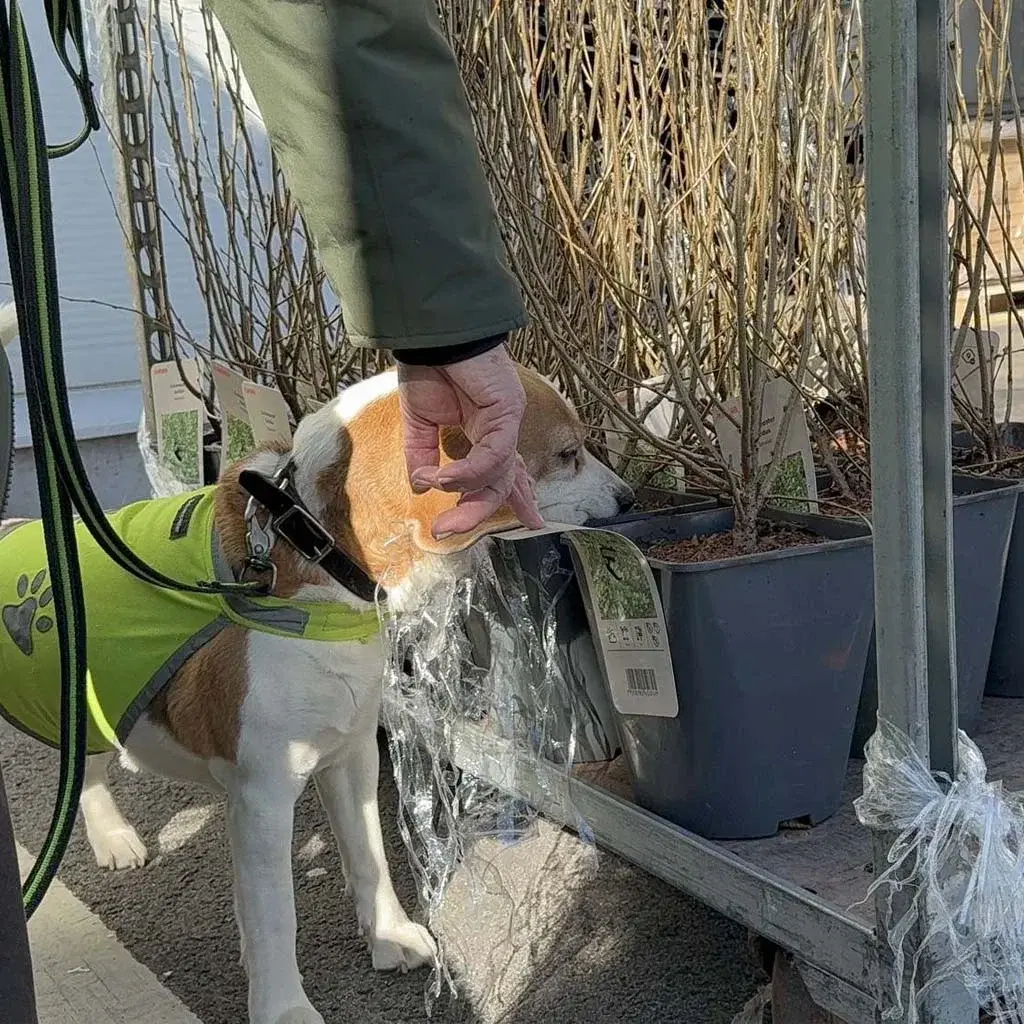
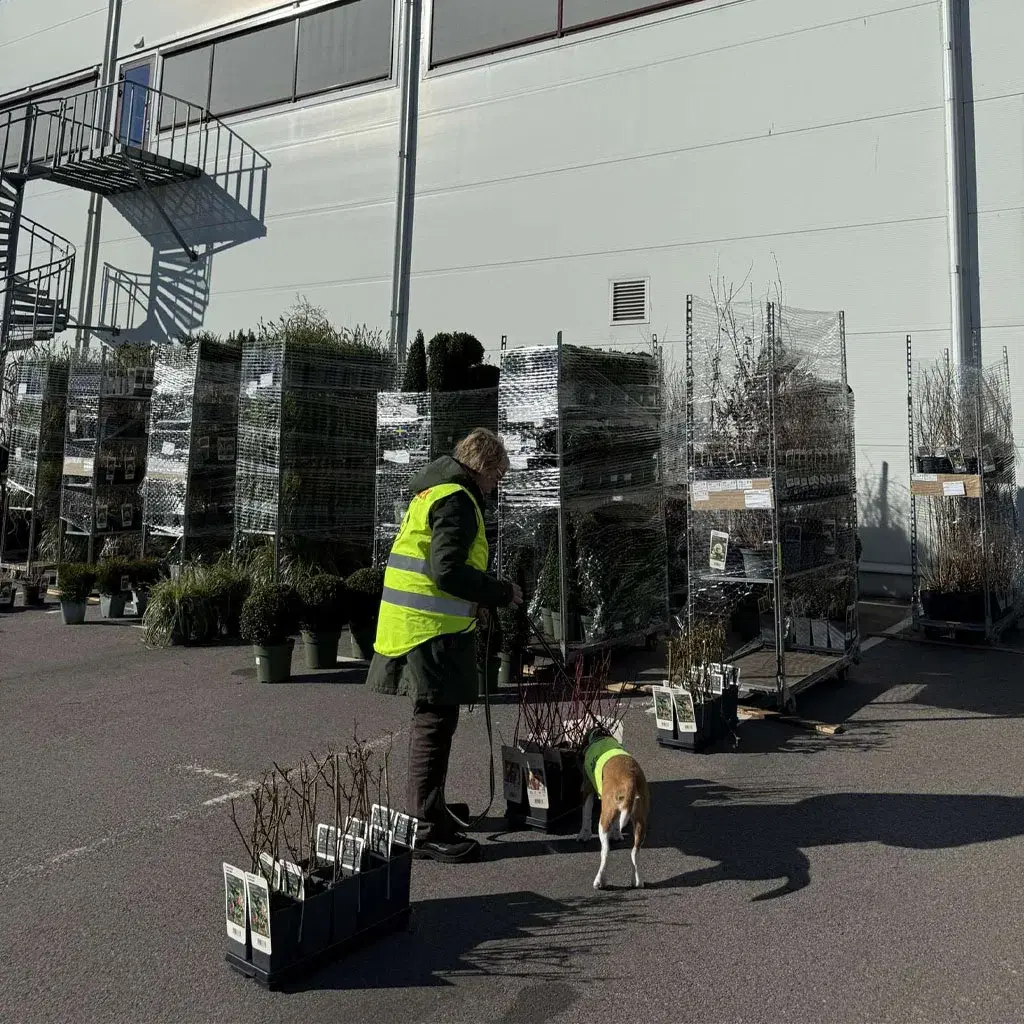
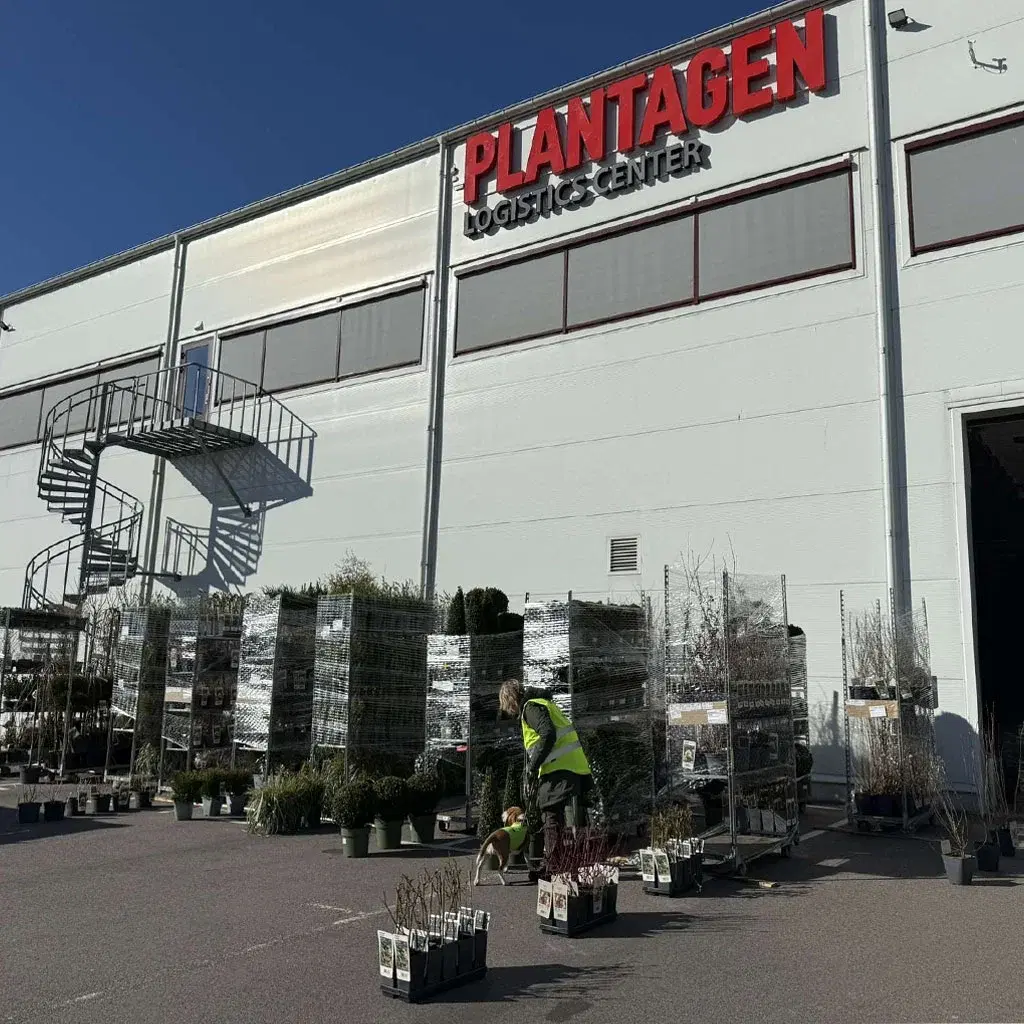
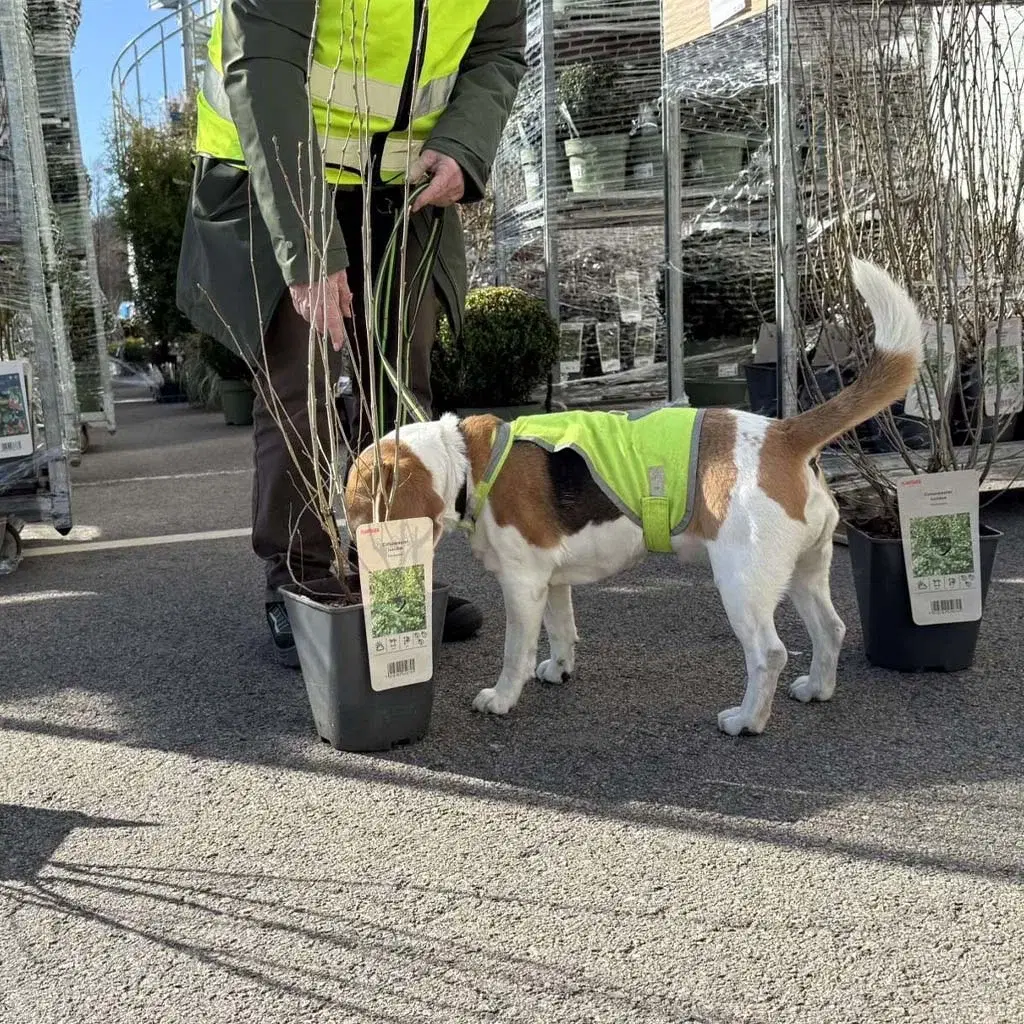
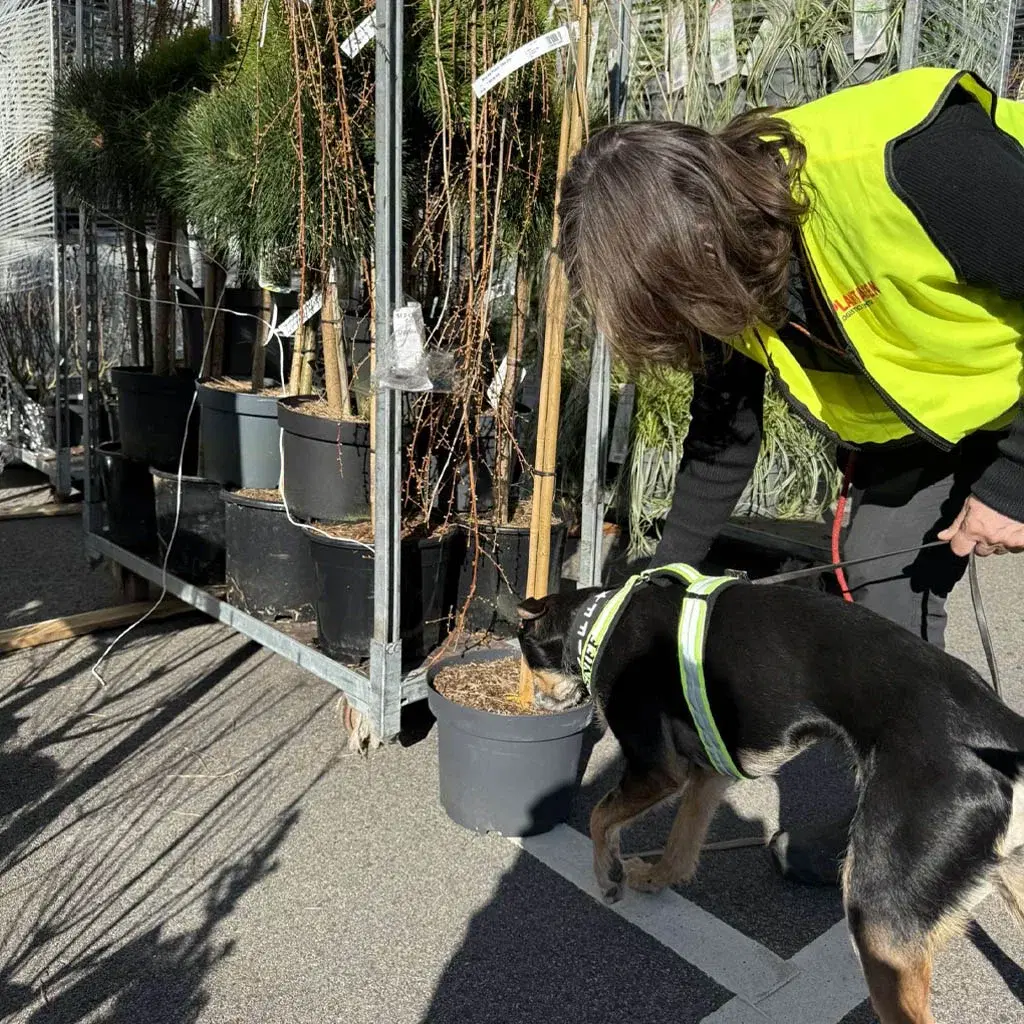
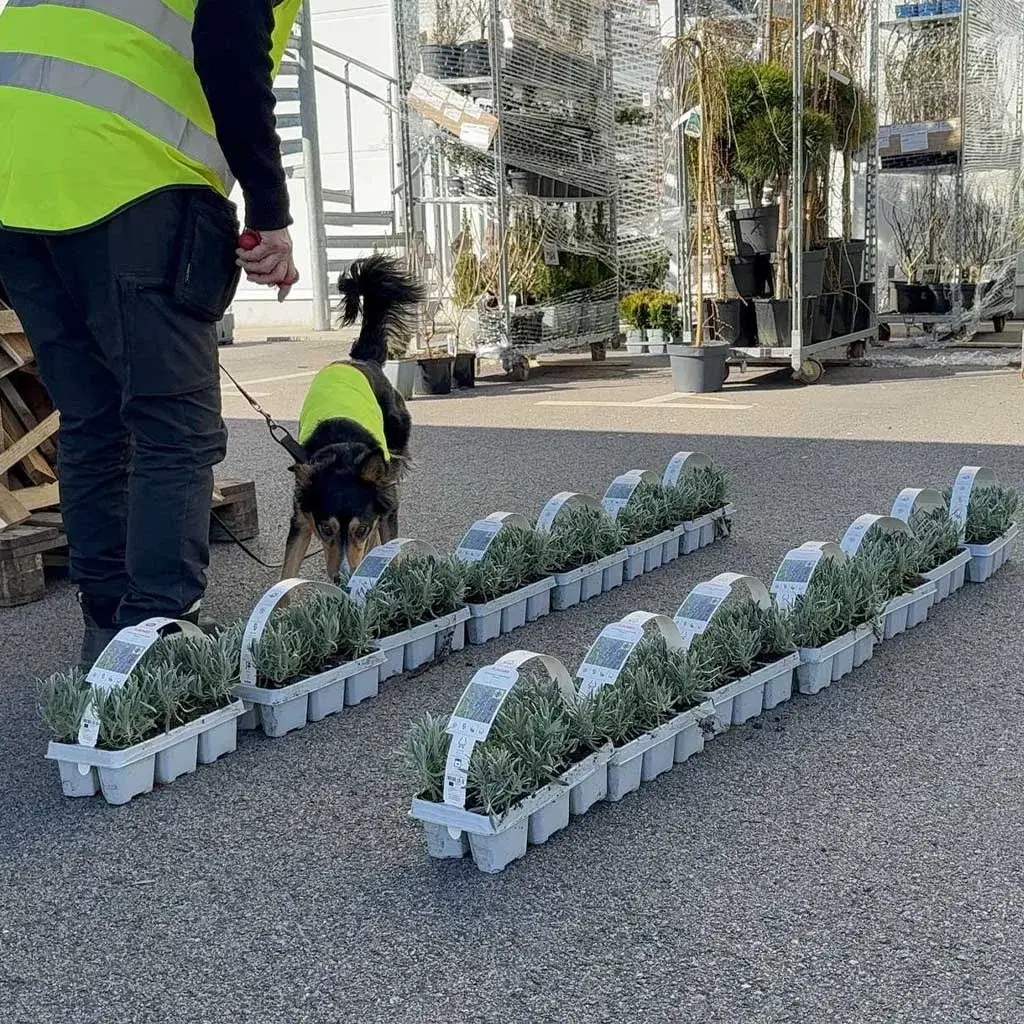
As part of our routines, we also check plant deliveries to our main logistics center using canine searches.
Questions and answers
- How do I check plants at home?
- Gently lift the plant out of the pot and inspect the soil and the bottom of the pot. Use gloves and a flashlight, as flatworms prefer dark places and their slime reflects light.
- Gently lift the plant out of the pot and inspect the soil and the bottom of the pot. Use gloves and a flashlight, as flatworms prefer dark places and their slime reflects light.
- What do I do with the soil if I find a flatworm?
- Gently lift the plant out of the pot and inspect the soil and the bottom of the pot. Use gloves and a flashlight, as flatworms prefer dark places and their slime reflects light.
- Then heat water to 40 degrees Celsius, using a kitchen thermometer to ensure the correct temperature. Submerge the entire soil clump of the plant in the 40-degree warm water for at least 15 minutes. This will kill any eggs in the soil. Dispose of the flatworm in a sealed bag as combustible waste.
- Can I keep the plant after finding a flatworm?
- Gently lift the plant out of the pot and inspect the soil and the bottom of the pot. Use gloves and a flashlight, as flatworms prefer dark places and their slime reflects light.
- Gently lift the plant out of the pot and inspect the soil and the bottom of the pot. Use gloves and a flashlight, as flatworms prefer dark places and their slime reflects light.
- Can I divide plants I recently purchased?
- We recommend that our customers avoid dividing and moving soil and plants until they are completely sure they are free of flatworms.
- We recommend that our customers avoid dividing and moving soil and plants until they are completely sure they are free of flatworms.
- How do I kill the flatworm safely and securely?
- Pour boiling water directly onto the flatworm, for example, in a bowl or container. It is important that you do not cut it into pieces, as it can regrow from parts of its body. Afterward, place it in a sealed bag and dispose of it as combustible waste, not in compost or garden waste, as this can contribute to spreading it.
- Pour boiling water directly onto the flatworm, for example, in a bowl or container. It is important that you do not cut it into pieces, as it can regrow from parts of its body. Afterward, place it in a sealed bag and dispose of it as combustible waste, not in compost or garden waste, as this can contribute to spreading it.
- What about eggs? How do I remove them?
- The eggs are small and difficult to see, and are red when freshly laid, turning darker and brown after a few days. They are about 0.5 cm in size and hide well among soil and along the pot's edge. The safest approach is to heat-treat the soil. Submerge the soil clump in 40-degree Celsius water for at least 15 minutes to kill the eggs and prevent spreading. This is the most effective measure you, as a customer, can take at home to avoid further spread.
- The eggs are small and difficult to see, and are red when freshly laid, turning darker and brown after a few days. They are about 0.5 cm in size and hide well among soil and along the pot's edge. The safest approach is to heat-treat the soil. Submerge the soil clump in 40-degree Celsius water for at least 15 minutes to kill the eggs and prevent spreading. This is the most effective measure you, as a customer, can take at home to avoid further spread.
- What do I do with the pots if I discover a flatworm on my plant?
- It is sufficient to clean the pots thoroughly with hot water and soap, and rinse them well afterward.
- It is sufficient to clean the pots thoroughly with hot water and soap, and rinse them well afterward.
- What do I do if I discover a flatworm on my plants that are already planted outdoors?
- Pour boiling water over the flatworm and dispose of it as combustible waste. Treat the soil with 40-degree warm water for at least 15 minutes. Report to the Norwegian Environment Agency by sending a photo and information to post@miljodir.no and marking the subject field with: "Flatworm discovery case 2025/7837", and inform your local Plantasjen store where the plant was purchased.
- Pour boiling water over the flatworm and dispose of it as combustible waste. Treat the soil with 40-degree warm water for at least 15 minutes. Report to the Norwegian Environment Agency by sending a photo and information to post@miljodir.no and marking the subject field with: "Flatworm discovery case 2025/7837", and inform your local Plantasjen store where the plant was purchased.
- What do I do if I come across the flatworm Obama nungara in my garden or in the wild?
- Take a photo of the flatworm and provide information about where you found it to the Norwegian Environment Agency at post@miljodir.no, marking the subject field with: "Flatworm discovery case 2025/7837". If possible: place the flatworm in a sealed bag and pour boiling water over it at home. Dispose of in a sealed bag as combustible waste.
- Take a photo of the flatworm and provide information about where you found it to the Norwegian Environment Agency at post@miljodir.no, marking the subject field with: "Flatworm discovery case 2025/7837". If possible: place the flatworm in a sealed bag and pour boiling water over it at home. Dispose of in a sealed bag as combustible waste.
- How do I store infected plants?
- Keep them isolated and avoid placing them outdoors. Outdoor storage increases the risk of spreading, so infected plants and waste should be kept indoors and tightly sealed until they have been treated or destroyed.
- Keep them isolated and avoid placing them outdoors. Outdoor storage increases the risk of spreading, so infected plants and waste should be kept indoors and tightly sealed until they have been treated or destroyed.
- Who should I notify if I discover a flatworm?
- We recommend that you notify the Plantasjen store where you purchased the plant, as well as the Norwegian Environment Agency. For notifying Plantasjen, we would like the customer to photograph the flatworm and the plant, and submit the pictures along with the product's EAN code to the store. To notify the Norwegian Environment Agency, send them a photo and information via post@miljodir.no and mark the subject field with: "Flatworm discovery case 2025/7837".
- We recommend that you notify the Plantasjen store where you purchased the plant, as well as the Norwegian Environment Agency. For notifying Plantasjen, we would like the customer to photograph the flatworm and the plant, and submit the pictures along with the product's EAN code to the store. To notify the Norwegian Environment Agency, send them a photo and information via post@miljodir.no and mark the subject field with: "Flatworm discovery case 2025/7837".
- How long can the flatworm survive indoors or in a greenhouse?
- It is unclear how long the flatworm survives indoors, but in mild environments, it can live for a long time. Therefore, it is important to treat findings quickly and isolate the plant.
